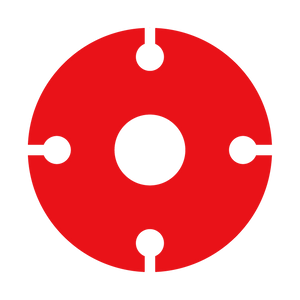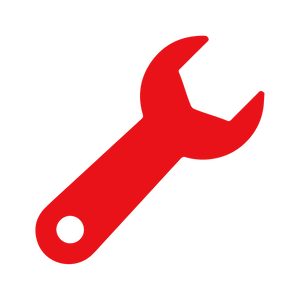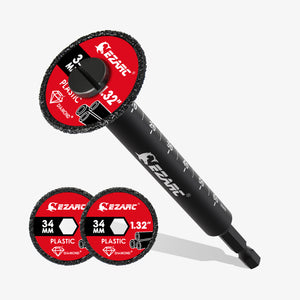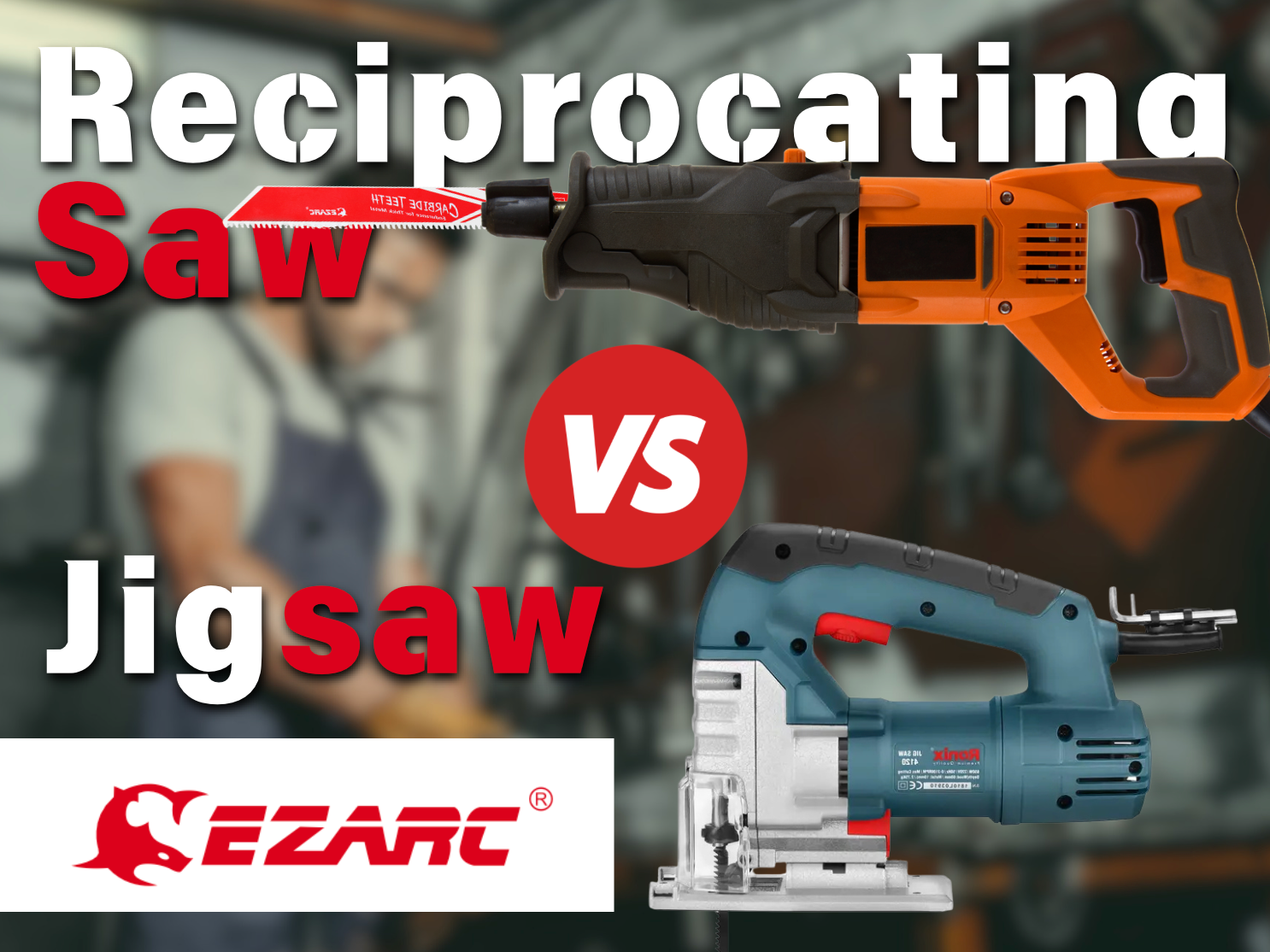Ever found yourself confused about whether a reciprocating saw or a jigsaw is best for your next project? You’re not alone. Let’s break down their strengths so you can confidently pick the right tool every time, saving effort, time, and maybe even your sanity.
- 1. Understanding the Basics: Reciprocating Saw vs Jigsaw
- 2. Sawzalls : The Go-To for Fast, Rough Cuts
- 3. Jigsaw: The Choice for Curves and Creative Shaping
- 4. Core Differences: Reciprocating Saw vs Jigsaw
- 5. Material Matters: What Can You Cut?
- 6. Ease of Use and Safety
- 7. When to Choose Each: Reciprocating Saw vs Jigsaw in Real Scenarios
- 8. Blade Selection for Each Tool
- 9. Maintenance and Longevity
- 10. Cost and Value Considerations
- 11. Conclusion
Understanding the Basics: Reciprocating Saw vs Jigsaw
Before you can choose between a sawzall and a jigsaw, it helps to know the basics of each. Although they both cut materials with a fast back-and-forth blade movement, they’re designed for different jobs.
- Reciprocating saws often called “Sawzalls” , are robust, aggressive, and built for demolition. Think cutting through wood, piping, metal, and even plaster.
- Jigsaws specialize in precision. They excel at making intricate cuts, curves, and detailed patterns in wood, plastic, or thin metal.
But the real difference lies in their design, handling, and purpose. Let’s dig deeper.
Sawzalls : The Go-To for Fast, Rough Cuts

If you have a tough and super urgent tasks like ripping out old windows or hacking through nail-studded lumber, a sawzall is your best friend. It’s made for rapid, straight-ahead cutting where neatness takes a backseat to efficiency.
What Makes Sawzalls Special?
A sawzall is designed for heavy-duty work. Its straight, exposed blade sticks out from the front, letting you plunge the blade into material or saw through without worrying about fine details. Key benefits include:
- Versatility: Whether it’s wood, PVC, plaster, or metal, change the blade and go.
- Reach: Its long shape and powerful motor let you cut in awkward spots or tight spaces, such as behind stud walls.
- Speed: Powered for demolition, it eats through tough material quickly—perfect when time is money.
However, a sawzall is not at all about finesse. The cuts are rough and tear-prone, making it unsuited for visible finishing work. Also, the powerful blades can produce excess vibration, so a steady grip is important. Check out our great product collection of sawzall blades here!
Jigsaw: The Choice for Curves and Creative Shaping
When your project needs clean lines, curved edges, or a detailed pattern, think furniture making or DIY crafts, a jigsaw shines. Its slim, vertical blade moves up and down, and you guide the saw from above. This opens up creative cutting options.

Advantages of Jigsaws
Jigsaws are ergonomically designed for precision. Here’s what you get:
- Control: Hold it comfortably with one or both hands for great maneuverability along drawn shapes or curves.
- Fine Cuts: Jigsaws leave smooth edges, ideal for finish carpentry or fitting tiles.
- Versatility: With the right blade, it handles wood, laminate, soft metals, plastic, and even ceramic tile.
- Plunge Cuts: Start a cut in the middle of a piece without drilling a hole—handy for creating openings.
The downside? Jigsaws aren’t built for brute force or thick, dense material. If you try, cuts can turn out slow or the blade might bend.
Core Differences: Reciprocating Saw vs Jigsaw
Choosing between a sawzall vs jigsaw boils down to the kind of job in front of you. Here are the major points of distinction:
- Application: Sawzalls are demolition tools, jigsaws are for precision cutting.
- Blade style: Sawzalls use thicker, stiffer blades; jigsaws use thin, delicate blades for fine cuts.
- Cutting motion: Both move the blade back and forth, but the sawzall blade moves straight out ahead, while the jigsaw blade moves vertically.
- Edge finish: Expect a rough finish from sawzalls, smooth from jigsaws.
- Project types: Use a sawzall for remodeling, plumbing, rough framing, or removing nails and pipes; use a jigsaw for furniture, shelving, or hobbies that require neat edges and curves.
Material Matters: What Can You Cut?
The choice between sawzall vs jigsaw also depends on what you’ll cut most often. Here’s how they fare:
- Wood: Both tools handle wood, but sawzalls excel at thick, nailed timber, while jigsaws are best for thin boards or making curves.
- Metal: sawzalls cut pipes and metal studs, even nails. Jigsaws can cut through thin sheets or soft metals with the right blade.
- Plastics and PVC: Both can handle it, though for precision on visible surfaces, the jigsaw wins.
- Tile and Ceramics: Jigsaws (with a carbide blade) work for intricate cuts or notches in tile; sawzalls are not recommended here.
To learn more on which blades to use, read our guide on what blade to use on different materials! Choose The Right Sawzall Blade!
Ease of Use and Safety
Practical considerations matter. Sawzalls are heavier, require two hands, and produce more vibration. They’re louder and can fatigue your hands during prolonged use. They demand firm handling and safety gear—always wear your goggles and gloves.
Jigsaws are lighter, quieter, and easier for most people to control, especially for long, detailed tasks. Their smaller size means less hand fatigue and often just one hand to steer the saw, leaving your other hand free to guide the material.
Both tools have built-in safety features, but always unplug or remove the battery before changing blades. Use the right blade for your material, and start slow until you’re comfortable with your cut.
When to Choose Each: Reciprocating Saw vs Jigsaw in Real Scenarios
Let’s match each saw to actual tasks:
- Reciprocating saws are heroes when you’re gutting a bathroom, making rough openings in walls, pruning thick tree branches, or quickly taking apart pallets. They’re built to tear down, not polish up.
- Jigsaws excel when you’re customizing countertops, creating curves in plywood for décor projects, or installing flooring that hugs odd walls. For shaped, interior cuts, nothing beats a jigsaw.
Having both tools is ideal for advanced DIY or trade work because they complement each other’s weaknesses. But if you must pick one, take a step back and consider the projects you tackle most.
Blade Selection for Each Tool
Getting the most from your sawzall or jigsaw means using the right blade:
- Sawzall Blades: Come in varying lengths and tooth patterns; longer, coarse-tooth blades are for rough wood, finer for metals.
- Jigsaw blades: Shorter and thinner; available in T- or U-shank for different saws, and come in wood, metal, laminate, or ceramic-specific types.
Remember to match the blade to both your material and the saw, your results (and safety) depend on it. Check out our sawzall blades from our store!
Maintenance and Longevity
Both saws require proper maintenance to work safely and last:
- Keep blades sharp and replace worn ones.
- Clean sawdust and debris from vents after use.
- Ensure batteries (for cordless models) are charged and stored well.
- Occasionally check moving parts for lubrication and wear.
Treat your tool right and it will serve you for years, regardless of whether you chose a sawzall or a jigsaw.
Cost and Value Considerations
When comparing a sawzall to a jigsaw, both cost and long-term value matter.
Upfront Cost:
- Sawzalls generally range from $60–$250, with cordless models and extra features increasing the price.
- Jigsaws are usually cheaper, ranging from $40–$180, even for advanced models.
Blade Costs:
- Sawzall blades are larger and more expensive ($3–$12 each, specialty up to $25), and wear faster during demolition.
- Jigsaw blades are smaller, cheaper ($1–$6), and last longer for precision work.
Value & Use:
Sawzalls are built for heavy-duty cutting—demolition, pruning, and metal, making them ideal for professionals or frequent tough jobs. While they have a higher total cost of ownership, their power and versatility can replace multiple tools in rough work.
Jigsaws excel in clean, precise cuts for wood, plastic, and thin metal, offering lower purchase and operating costs. They’re perfect for DIYers, hobbyists, and projects that demand accuracy over raw power.
Before buying, consider your workload. Investing in the tool that matches most of your projects is usually more cost-effective in the long run. Also, remember that using the right blade is just as important to squeeze out all of your sawzall or jigsaw blade to its maximum value!, Come check out our sawzall blades here!
Quality Products, Best Prices, Easy Returns
Conclusion
Choosing between a Sawzall and a jigsaw really comes down to the kind of work you do most. If your projects lean toward demolition, renovation, or any task where speed and raw cutting power matter more than precision, the Sawzall is a beast you can count on. It powers through wood, metal, PVC, and even embedded nails without hesitation, making it a favorite for contractors, remodelers, and serious DIYers who don’t have time to baby their tools.
On the other hand, if you’re crafting furniture, cutting intricate shapes, or working on projects where the finish matters as much as the cut itself, the jigsaw is your trusted companion. Its ability to follow curves, handle delicate materials, and leave smooth edges makes it a go-to for fine woodworking, décor projects, and precise home improvements.
In the end, the right choice isn’t about which saw is “better,” but which one is better for your work. For brute force and versatility in rough cutting, grab a Sawzall. For accuracy and finesse, reach for a jigsaw. Either way, picking the right tool means faster work, better results, and a project you can be proud of.

 Oscillating Multi-Tool Blades
Oscillating Multi-Tool Blades
 Reciprocating Saw Blades
Reciprocating Saw Blades
 Cutting & Grinding
Cutting & Grinding
 Hole Saw
Hole Saw
 Drilling
Drilling
 Sanding & Polishing
Sanding & Polishing
 Hand Tools
Hand Tools
 Metal Worker & Fabrication
Metal Worker & Fabrication
 Woodworking & Carpentry
Woodworking & Carpentry
 Electrical & Plumbing
Electrical & Plumbing
 Automotive
Automotive
 Concrete & Masonry
Concrete & Masonry
 Demolition
Demolition
 NEW ARRIVALS
NEW ARRIVALS
























コメントを書く
このサイトはhCaptchaによって保護されており、hCaptchaプライバシーポリシーおよび利用規約が適用されます。